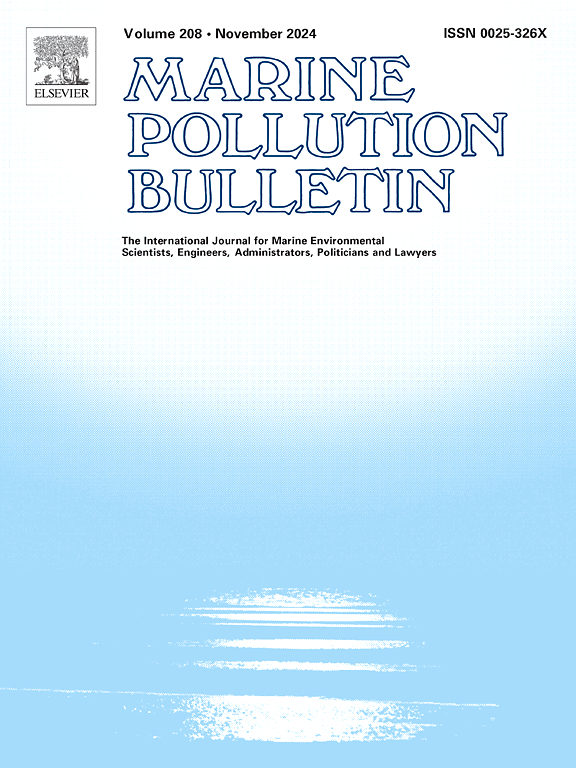葡萄牙西南大陆架沉积物中有机物和多环芳烃的来源与分布
IF 5.3
3区 环境科学与生态学
Q1 ENVIRONMENTAL SCIENCES
引用次数: 0
摘要
对葡萄牙西南部大陆架的 70 个表层样本和 19 个短岩心样本中的总有机碳(Corg)、总氮(Ntot)、Corg/Ntot、δ13Corg、δ15N、碳酸钙(CaCO3)和粒度进行了分析。对其中一部分样本中的二甲苯和 USEPA-16 PAHs 进行了定量分析。研究结果表明,根据 Corg、Ntot 和同位素特征,有机物来源于陆地和海洋的混合。过氧乙酸和 δ13Corg 被用来确定这些环境中多环芳烃的主要来源。诊断性苝比率显示,塔霍斯地区的苝来自天然来源,萨多疏浚处理场的苝来自受污染的材料,锡内斯地区的苝与大气沉积的热源有关。过二甲苯与 USEPA-16 PAHs 之间的明显相关性表明,塔霍河的污染源既有自然污染源,也有人为污染源。这种将 USEPA-16Σ PAHs、苝和 δ13Corg 结合在一起的多代理方法为评估环境风险和根据 MSFD 指导海洋环境管理提供了启示。本文章由计算机程序翻译,如有差异,请以英文原文为准。

Sources and distribution of organic matter and polycyclic aromatic hydrocarbons in sediments of the southwestern Portuguese shelf
Total organic carbon (Corg), total nitrogen (Ntot), Corg/Ntot, δ13Corg, δ15N, calcium carbonate (CaCO3), and grain size were analyzed in 70 surface samples and 19 short cores from the southwestern Portuguese shelf. Perylene and USEPA-16 PAHs were quantified in a subset of these samples. The findings suggest that organic matter derives from a mix of terrestrial and marine sources, outlined by Corg, Ntot, and isotopic signatures. Perylene combined with δ13Corg was used to identify the main PAH sources in these environments. Diagnostic perylene ratios revealed contributions from natural sources in the Tagus region and contaminated materials from the Sado Dredged Disposal Site, with additional perylene in Sines linked to atmospheric deposition of pyrogenic sources. A significant correlation between perylene and USEPA-16 PAHs indicates natural and anthropogenic inputs from the Tagus. This multiproxy approach—combining USEPA-16ΣPAHs, perylene, and δ13Corg—offers insights for assessing environmental risks and guiding marine environmental management according to the MSFD.
求助全文
通过发布文献求助,成功后即可免费获取论文全文。
去求助
来源期刊

Marine pollution bulletin
环境科学-海洋与淡水生物学
CiteScore
10.20
自引率
15.50%
发文量
1077
审稿时长
68 days
期刊介绍:
Marine Pollution Bulletin is concerned with the rational use of maritime and marine resources in estuaries, the seas and oceans, as well as with documenting marine pollution and introducing new forms of measurement and analysis. A wide range of topics are discussed as news, comment, reviews and research reports, not only on effluent disposal and pollution control, but also on the management, economic aspects and protection of the marine environment in general.
 求助内容:
求助内容: 应助结果提醒方式:
应助结果提醒方式:


